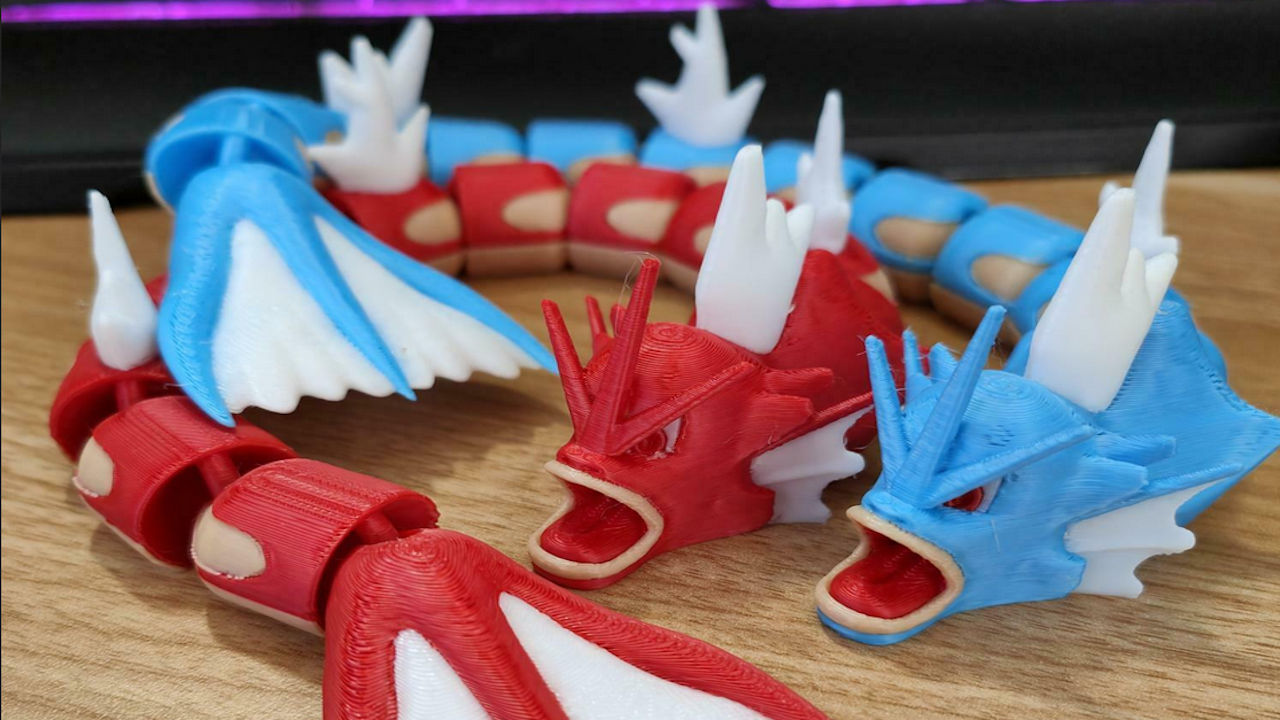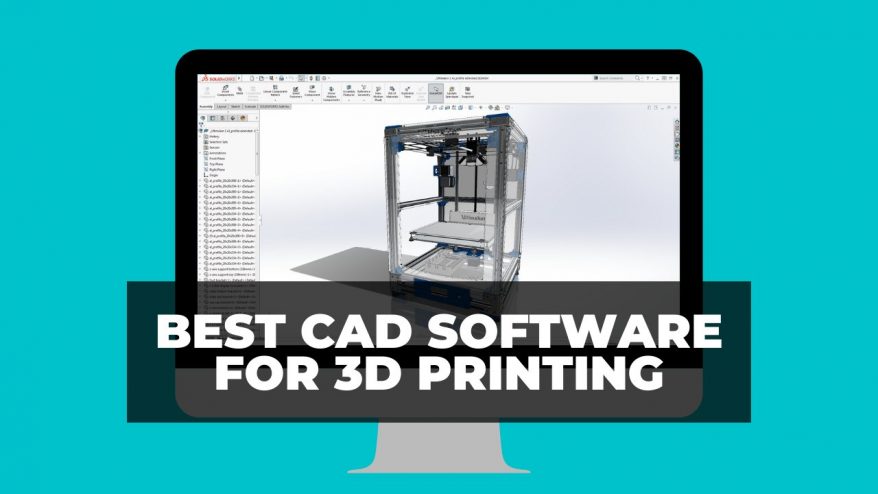
10 Best 3D Architecture Software 2023 (Design Tools)


At 3DSourced we’ve covered everything 3D printing and 3D since 2017. Our team has interviewed the most innovative 3D printing experts, tested and reviewed more than 20 of the most popular 3D printers and 3D scanners to give our honest recommendations, and written more than 500 3D printing guides over the last 5 years.
Using the best 3D architecture software will help take the stress out of visualizing, creating, and rendering building designs.
Over the past couple of years, I’ve tested plenty of powerful drawing and modeling tools. While each has its strengths, it’s crucial to choose one that suits your project and skill level best to get the most from these tools.
For most users, the best 3D architecture software is Revit. It has a steep learning curve, but once mastered, it provides a competitive edge for BIM-focused 3D modeling, with automation tools that improve efficiency and intuitive collaboration features.
If you’re looking to produce 2D architectural plans, AutoCad is the best choice. It’s the industry standard, with specific architectural toolsets including pre-built objects like doors and windows to speed up the drawing process.
In this guide, I’ll compare my favorite tools across key characteristics like functionality, ease of use, platform compatibility, and price so you can decide which is right for you.
We’ll also discuss how to use these tools to step beyond concept drawings and exterior models to design interiors and populate buildings with 3D modeling.
- Best Architecture Software – Full Round-Up
- What is Architecture Software?
- The Best Architecture Design Software Tools
- Revit – Best BIM Architecture Software
- AutoCAD – Best 2D Architecture Software
- Rhino 3D – Best 3D Architecture Software
- ArchiCAD – Good Architecture Software for Beginners
- SketchUp – Best Free Architecture Software
- 3D Studio Max – Great for Full Visualizations
- Chief Architect – Excellent Home Design Software
- CATIA – Best Architecture Design Software for Experts
- V-Ray – Ideal for Realistic Rendering
- Fusion 360 – Versatile Software with One Year Free
Best Architecture Software – Full Round-Up
- Revit: Best BIM Architecture Software
- AutoCAD: Best 2D Architecture Software
- Rhino 3D: Best 3D Architecture Software
- ArchiCAD: Good Architecture Software for Beginners
- SketchUp: Best Free Architecture Software
- 3D Studio Max: Great for Full Visualizations
- Chief Architect: Excellent Home Design Software
- CATIA: Best Architecture Design Software for experts
- V-Ray: Ideal for Realistic Rendering
- Fusion 360: Versatile Software with One Year Free
What is Architecture Software?
Architecture design software has transformed the architecture landscape, automating common processes and making it faster and easier to draw, save and print plans for your designs, as well as enabling users to edit their work as they wish. Beyond that, the best software packages also incorporate building information modeling (BIM) to help architects and engineers collaborate on every aspect of projects.
Some advanced software packages even allow you to adjust lighting effects and include engineering information to test whether your structures would be viable in the real world. Architecture design software can also help streamline workflow and project management tasks, so it’s a key tool throughout the entire design process.
However, there often isn’t a one-size-fits-all when it comes to architecture software. There are many different packages out there, all with different advantages, applications, compatibility, prices and experience levels, so it’s important to find the best architecture software for you.
The Best Architecture Design Software Tools
To help you out, we’ve compiled a list of the ten best architecture software available in 2023. We’ll take a look at what each software package does, how much it costs, and what applications it’s best suited to.
Revit – Best BIM Architecture Software
Pros
Focuses on allowing users to carry out effective BIM.
Build models using actual walls, roofs, windows, and doors.
Very popular and has great customer feedback.
Cons
Expensive.
Revit architecture software is an Autodesk product that focuses on allowing users to carry out effective building information modeling (BIM). BIM is an intelligent 3D model-based process that allows architects to plan, design and construct infrastructure more efficiently.
A recent report found 70% of US architects said that BIM has helped reduce errors in their work, and 56% said it increases client satisfaction, so it’s an invaluable tool.
Instead of just using lines and circles, you can build models using actual walls, roofs, windows, and doors, among other components. Revit does have a fairly steep learning curve, but once you’ve got the hang of it you can benefit from working with objects, rather than a vector between two points, to work quickly and gain a competitive edge.
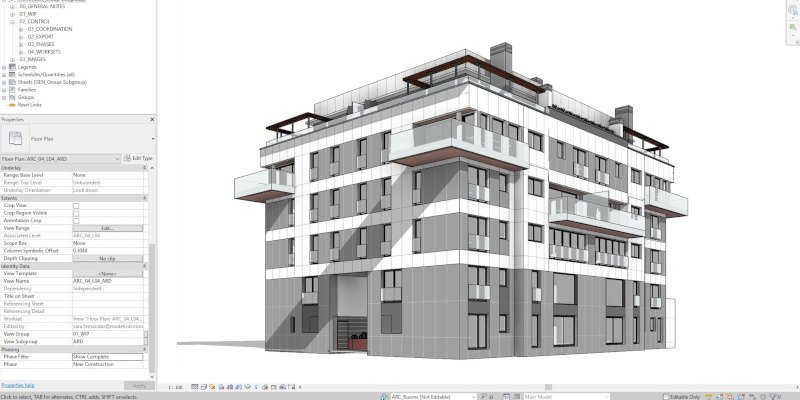
One of Revit’s key BIM features is its automation. All the changes you make to your model are recorded and updated in all views, reducing coordination and drawing time, and the software coordinates these edits so that your project considers BIM at every stage.
Revit is also great for collaboration. You can coordinate multiple team members into a single project using a single centralized cloud-based database and model, allowing for greater teamwork.
A Revit annual subscription is $2,425, and there are also monthly and three-year plans available. It’s compatible with AutoCAD and other Autodesk products.
AutoCAD – Best 2D Architecture Software
Pros
A staple in the industry since 1982.
Has pre-built objects to speed up the drawing process.
Useful for inexperienced designers.
Cons
Not enough customization options.
AutoCAD has been a staple in the architecture industry since it was created in 1982. As it is such a popular software, having experience using it can be helpful when searching for architectural careers.
AutoCAD is primarily used as a 2D drawing tool to represent buildings at a basic level, with these drawings then transferred to other software for more advanced 3D modeling processes.
It has pre-built objects like doors and windows to speed up the drawing process, in addition to specific architectural, electric and mechanical toolsets to support different design types.
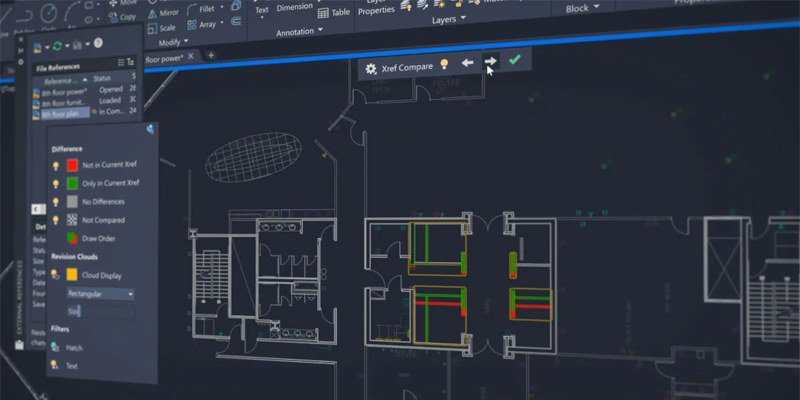
AutoCAD is used by both professionals and students and is a useful tool for inexperienced designers. It offers various teaching features, so you can use it to learn the basics of topics like design layers and line weight.
There is an architecture-specific version of the software available, which can be used to create more efficient base model drawings.
The cost of the stand-alone architectural drawing software is $1,690 per year, or you can pay $2,965 and get it as part of the Architecture, Engineering & Construction Collections. The software’s files are compatible with most other design packages.
Another benefit of AutoCAD is that it’s available as a mobile app and offers cloud-based storage, so you can view and edit your drawings in real time when you’re away from your PC.
Rhino 3D – Best 3D Architecture Software
Pros
Designed to handle complex curved lines and NURBS surfaces.
Offers great flexibility.
Able to create animations and realistic renders in the latest version.
Cons
Steep learning curve.
While most 3D CAD software applications are best with straight lines, Rhino 3D is specifically designed to handle complex curved lines and NURBS surfaces.
This makes it valuable to many architectural designers as it can easily model any parts of structures that aren’t straight, such as the intersections of curved roofs. Rhino is based on the non-uniform rational basis spline (NURBS) model rather than the mesh-based application used in most 3D software, so it produces mathematically precise curves and free-form surfaces.
Rhino offers great flexibility, as designers can enter physical models or drawings into Rhino and it will then automate the creation of complex 3D modeling, so you can model without CAD skills. This makes Rhino more suitable for beginners than some other architecture design software.
Rhino 6, the latest version, even allows you to scan real-world data. This 3D architecture software also provides documentation for designs and has great editing tools, allowing you to create animations and realistic renders, so it’s really flexible software.
A single Rhino 6 license on Windows will set you back $1,160. There are a number of add-ons that you can purchase for additional fees. Unlike a lot of other architecture software, Rhino users don’t have to upgrade to the newest release and upgrades usually cost around half a new license.

ArchiCAD – Good Architecture Software for Beginners
Pros
Popular among architects, urban planners, and designers.
Able to create 2D and 3D models.
User-friendly and a good option for beginners.
Cons
The user interface could be more modern.
ArchiCAD, developed by Graphisoft, was released back in 1987 and was the first CAD software that was able to create 2D and 3D models on a PC. It was also the first BIM product for personal computers. This combination of 2D, 3D, and BIM modeling makes it a popular product among architects, urban planners, and designers.
Whereas AutoCAD users can only draw 2D lines, ArchiCAD also offers 3D modeling, so it’s a versatile software. It’s known for being able to store large amounts of information in your 3D models, so it’s suitable for designing buildings, interiors and urban areas.
This software is renowned for being user-friendly and is a good option for beginners and students looking to learn the basics of architectural design. It’s also a time-effective software and offers several automated tools to ease complex processes, such as an inbuilt library of stair designs, with staircase designing often considered a difficult aspect of large projects.
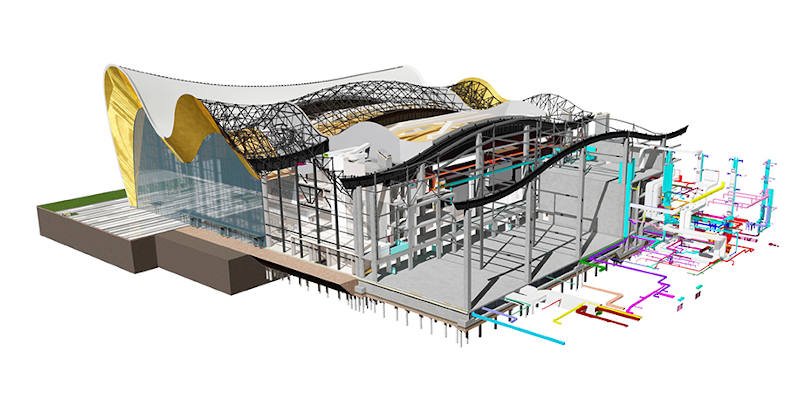
ArchiCAD can be integrated with several software packages, such as V-Ray which allows you to create photoreal renderings of your designs.
ArchiCAD doesn’t release its official pricing online – you have to get a quote from resellers – but a new, full ArchiCAD 17 license costs around $4,995. There is also a 30-day free trial.
SketchUp – Best Free Architecture Software
Pros
Free and great for beginners.
Very fast, allowing you rapidly prototype designs while still at the conceptual stage.
Cons
Lacks some features of paid packages.
If you’re looking for quality architecture design software that doesn’t break the bank, SketchUp is one of the best around. This free architectural software is particularly popular with beginners, students, and those working with small budgets, owing to its accessibility and real-world applications.
This software does lack some of the features of paid packages, but it still has the tools to create professional models. The free package comes without most of the exporting features, but you can choose to invest in the features that best suit your project for increased flexibility.
SketchUp is a good option for beginners who can use it to practice 3D modeling before moving on to more advanced software. It’s also favored for its speed, allowing you rapidly prototype designs while still at the conceptual stage, and more complex models can be created using the right add-ons.
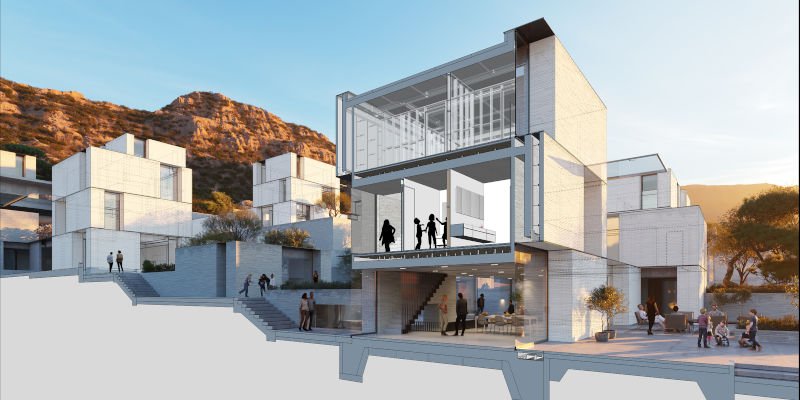
SketchUp was bought by Google in 2006 and, though it’s since been sold to Trimble, Google implemented some nice features, such as the ability to pull topographical and satellite images from Google Maps into the software.
You can purchase more features for $119 per year, or SketchUp Pro for $299 per year. There’s also SketchUp Studio for professional use, which costs $1,199 annually. Trimble releases a new version of SketchUp each year.
3D Studio Max – Great for Full Visualizations
Pros
Create full architectural visualizations of your project, using photorealistic renderings and fly-through animations.
Good for importing 2D drawings and translating them into 3D.
Cons
Difficult to navigate.
Another Autodesk product, 3DS Max is one of the best architecture software packages for 3D designing. This was the first software to offer hardware-accelerated rendering of 3D images.
One of its main benefits is that you can create full architectural visualizations of your project, using photorealistic renderings and fly-through animations. It’s also a good tool for importing 2D drawings and translating them into objects that can be textured and rendered in 3D, which is useful for beginners as you can create realistic 3D models with minimal CAD knowledge.
There is an industry-specific Architecture, Engineering and Construction collection, which includes a number of other programs like AutoCAD and Revit. It also has tools for structural analysis, building performance analysis and steel detailing. It even offers vehicle path calculations.
An annual subscription for 3DS costs $1,620 while a monthly subscription is $205. You can also save around $500 if you go for the three-year subscription for $4,375. Each option comes with a 30-day free trial.
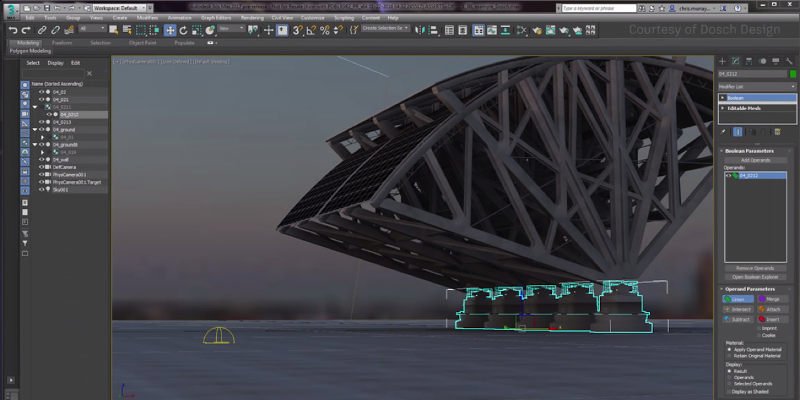
Chief Architect – Excellent Home Design Software
Pros
Ideal for residential home design.
Quickly construct 3D models and then project those into 2D plans and elevations.
Intuitive interface and smart building tools.
Cons
Heavy learning curve.
Chief Architect is ideal for residential home design rather than modeling other infrastructures like offices or retail parks. This software can be used by architects and remodeling professionals to obtain 2D and 3D renders of home models.
The software allows you to quickly construct 3D models of exterior and interior spaces, and then project those into 2D plans and elevations. It’s favored by many for its user-friendliness, and it’s a good option if you have a home design product but limited 3D modeling skills thanks to its live home design webinars and training.
Chief Architect boasts an intuitive interface and smart building tools, and it will create the 3D structure and automatically generate the building system of your project. You can also export 360° panorama renderings.
The Premier package costs $2,695.50, or $199 a month. You can also try the product for free courtesy of the trial.
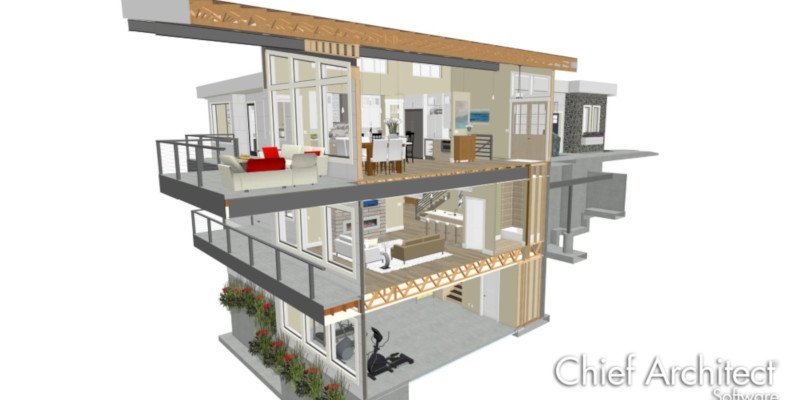
CATIA – Best Architecture Design Software for Experts
Pros
Designed to handle complex architectural problems.
Great for collaboration.
Cons
Steep learning curve.
CATIA was developed by Dassault Systemes over 30 years ago and was originally conceived to produce precise model military hardware.
The is designed to easily handle complex architectural problems and produce very accurate models. It is used in various sectors, ranging from architecture and automotive to aerospace and high-tech.
CATIA is also great for collaboration, and it recently expanded its coordination features to use Cloud functionality.
Frank Gehry, known for his works such as the Guggenheim Museum in Bilbao and the Walt Disney Concert Hall in Los Angeles, used CATIA to create his renowned curvilinear buildings.
In terms of pricing, you need to contact Dassault for a quote. To give you an idea, a full CATIA 3D license costs upwards of $11,000 for a one-time purchase, or around $1,700 for a quarterly lease.
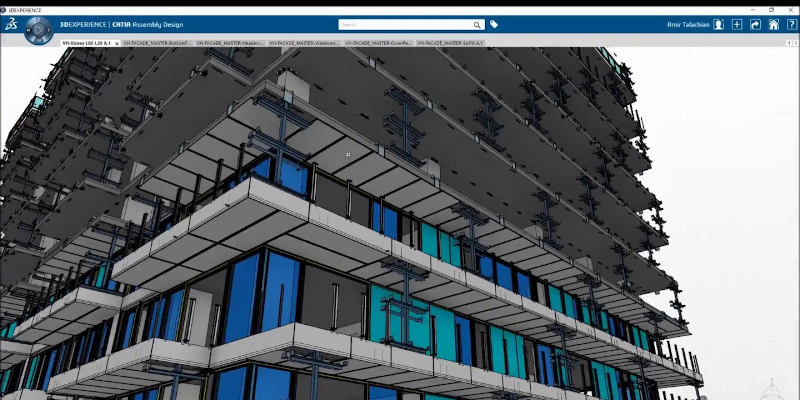
V-Ray – Ideal for Realistic Rendering
Pros
Offers access to the cleanest textures and many color palettes.
Student packages are available at a more affordable price.
Cons
Not beginner-friendly.
V-Ray is a plugin, rather than standalone software, but it’s one of the best architecture software tools for realistic rendering, allowing you to show how your 3D models would look in the real world. It can be used with ArchiCAD, SketchUp, Rhino and 3DS, among other software packages.
The plugin offers access to the cleanest textures and one of the widest color palettes out there, meaning you can make the most of light and shade in your designs and create photoreal representations of your models. This makes it a useful tool if you’re looking to give your designs an extra flourish.
V-Ray isn’t well suited to beginners, as it requires a high level of operational expertise to use it effectively. You can purchase the whole package for around $697, or you can save money if you only buy the plugin for use with one particular software.
There’s also a student package which is just $148, so it’s a lot more affordable than many other architectural rendering software.
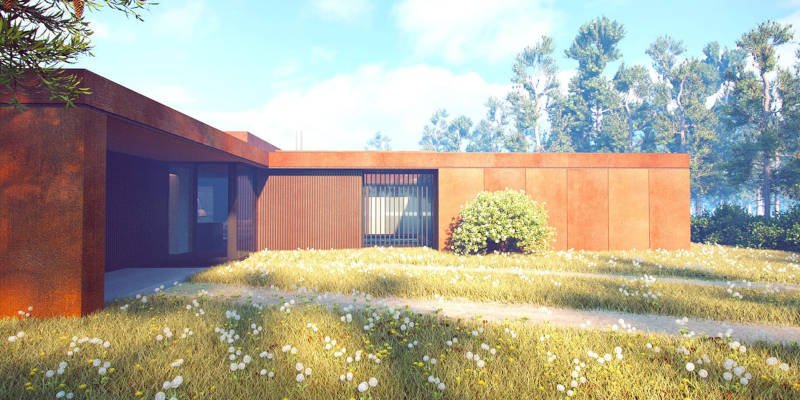
Fusion 360 – Versatile Software with One Year Free
Pros
Offers an all-in-one solution for design, testing, and fabrication.
Can use it on many devices such as smartphones or tablets.
Well supported, with regular updates.
Cons
Can be laggy when using slow internet connections.
Fusion 360 offers an all-in-one solution for design, testing, and fabrication, so it’s gained plenty of fans due to its versatility.
This Autodesk software offers collaborative work environments linked via cloud technology, so it can be used to bring together professionals from different areas on a single project. Fusion 360’s cloud-based structure also means you can use it on many devices, so you can access your designs via a smartphone or tablet.
It’s also a powerful architecture design software that can be used to produce realistic renders of your designs and models, so it’s useful for visualizations and presentations.
Another plus is that Fusion 360 is very well supported, with regular updates every few months bringing new features.
Fusion 360 is available for free for one year for non-commercial use. Subscriptions come at $70 a month or $573 a year, so it’s a good option for less experienced users or those working with a smaller budget.
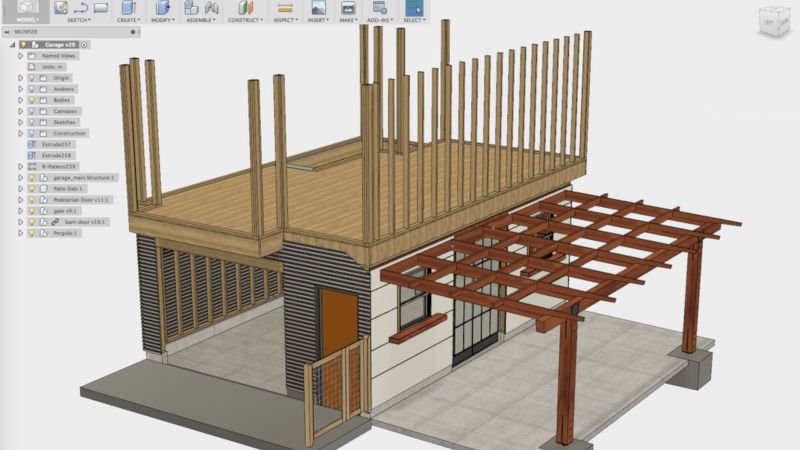
If you enjoyed this article, check out our other 3D design guides to learn more:
- Best 3D Car Design Tools
- What’s the Top 3D Shoe Design Software?
- Which Free 3D Furniture Design Software is Best?
- The Best 3D Fashion Design Apps: Ranked
- The Best Tools for Creating Floor Plans
- My Top Picks for Garage Design Software
- Our Favorite Pool Design Software
- Create Your Dream Kitchen With these 3D Tools




